Why Are There State Seals around the St. Louis Fed Building?
Visitors to our free Economy Museum and pedestrians passing through Federal Reserve Plaza often wonder why state seals appear on the sidewalks around, and exterior walls of, the Federal Reserve Bank in Downtown St. Louis.
In addition to Missouri, there are seals for Arkansas, Illinois, Indiana, Kentucky, Mississippi and Tennessee.
“Someone asks at least once a week,” says Economy Museum Director Tom Shepherd. “They’ll joke, ‘Hey, I thought I was in Missouri!’”
Location of seals around the St. Louis Fed
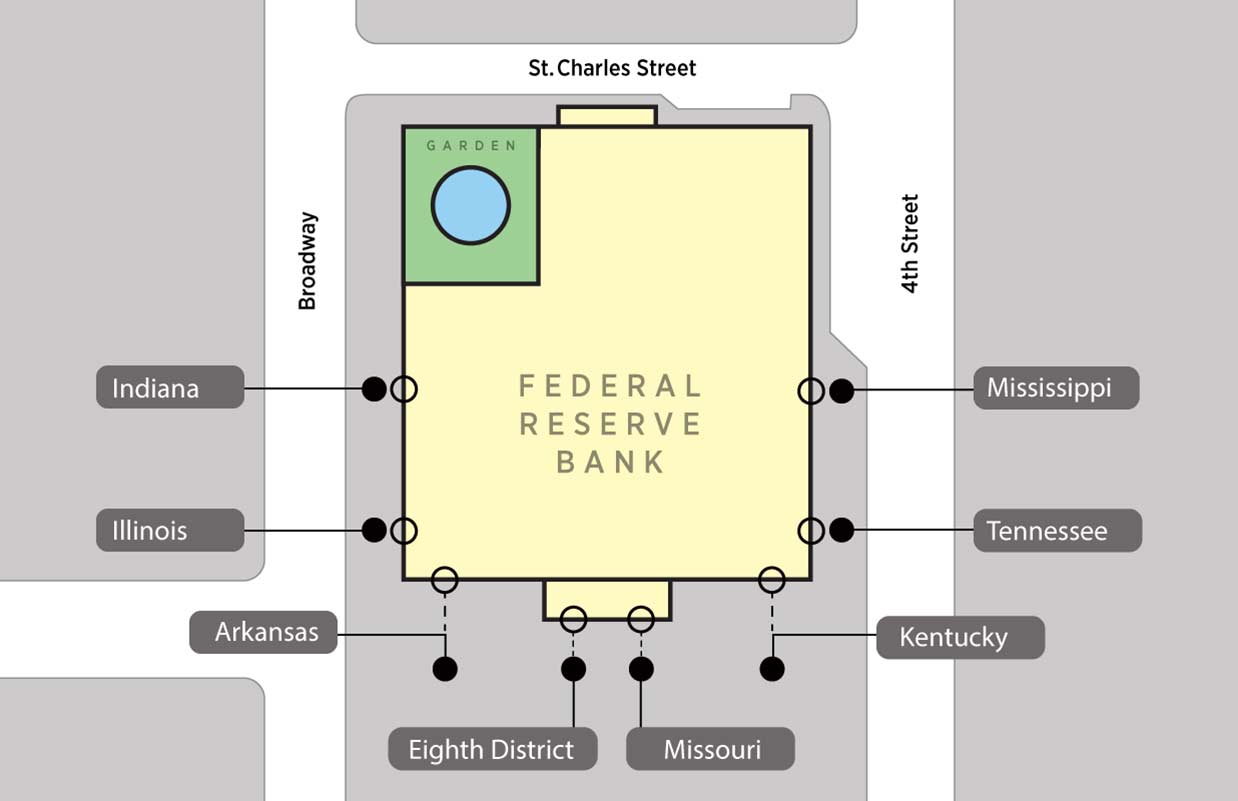
West wall, visible from Broadway: Illinois, Indiana.


South wall, visible from pedestrian plaza: Arkansas, St. Louis Fed Eighth District, Missouri, Kentucky.

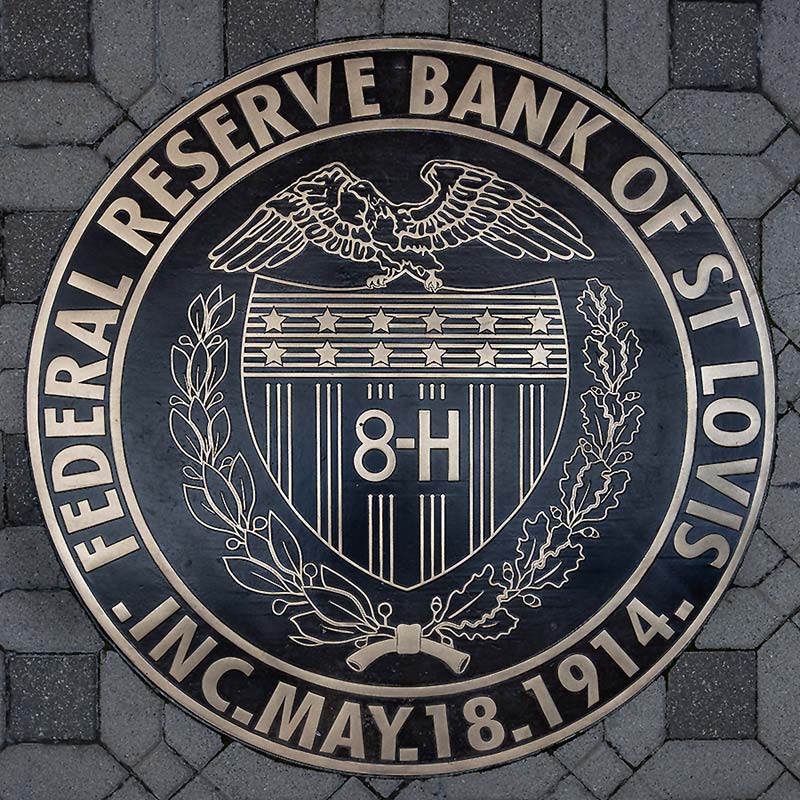

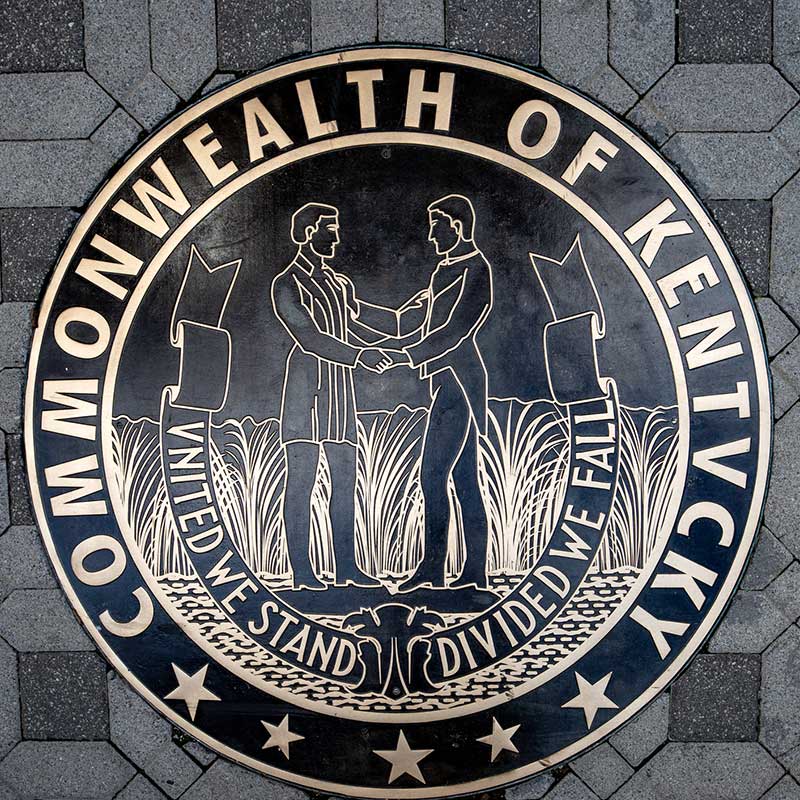
East wall, visible from Fourth Street: Mississippi, Tennessee.
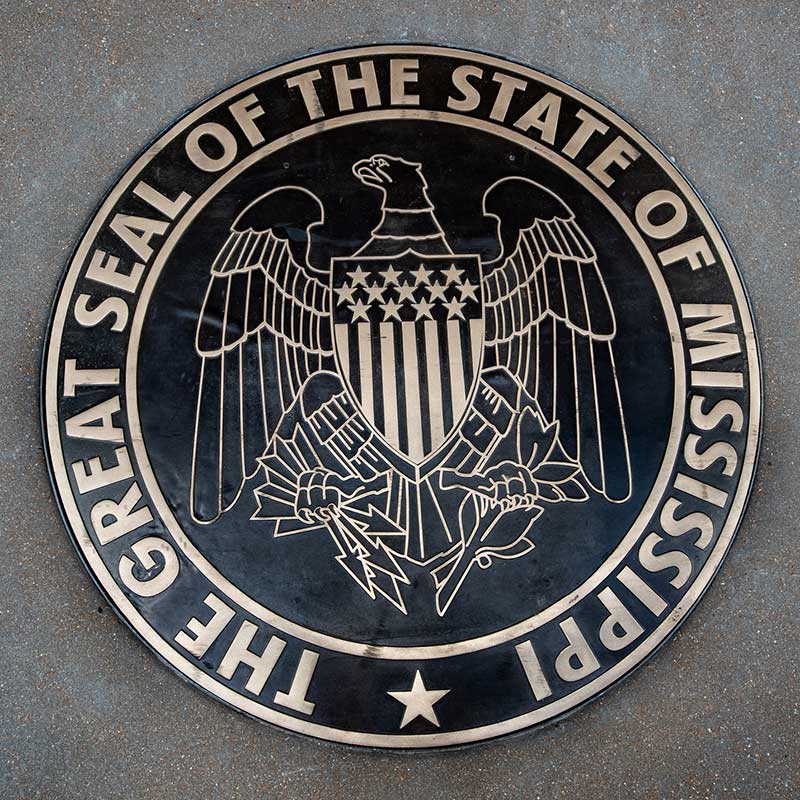
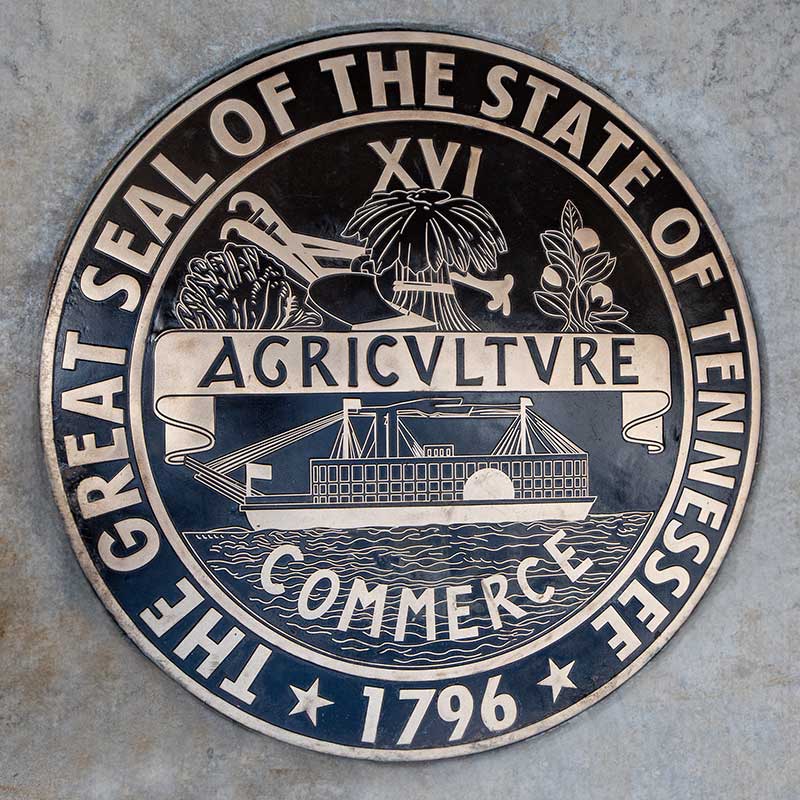
Original Seals on the Building
To explain the significance of the seals, along with a little of their history, I had the pleasure of sitting down with Karl Ashman, executive vice president of the Administration and Payments division. He has been with the St. Louis Fed for 29 years, and Facilities Management is one of his many responsibilities, making him the best person to share the history of the seals.
Starting with my first question, Ashman seemed to relax in his chair as I watched him reflect on all he knew about the original seals, as well as the new ones put in during a renovation of the St. Louis Fed’s screening vestibule in the early 2000s.
More than 100 years ago, the Federal Reserve Bank of St. Louis was one of 12 regional Reserve banks formed around the nation to represent the voice of Main Street America within the nation’s Federal Reserve System.
At the time, St. Louis was the nation’s fourth largest city and it was chosen to be the headquarters for the Eighth Federal Reserve District. The St. Louis Fed has always been located in the Gateway City downtown; its original offices were in an existing building at the corner of Broadway and Olive. Ashman explained that the seals went up between 1922 and 1923 when a new limestone building was constructed.
The eight seals represented are the seals of the seven states in our district, as well as the Bank’s official seal.
Then and Now

The first picture, circa 1924-25 by P.R. Papin Photo, shows the exterior of the St. Louis Fed’s headquarters looking west on Locust from Fourth Street. The limestone building opened June 1, 1925. See more centennial images in our digital archive, FRASER.
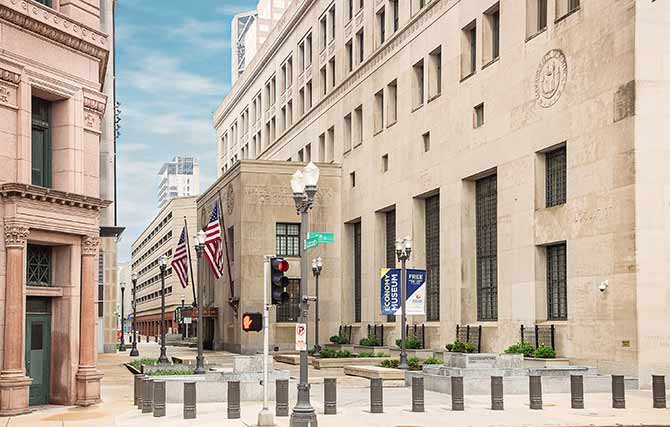
The second picture shows a similar vantage point in 2019. Locust Street was converted into a pedestrian plaza and a screening vestibule was added to the St. Louis Fed’s building in the early 2000s.
There is no documentation to confirm if the seals were carved somewhere else and plugged into the building or carved into the limestone on the building, Ashman noted. The seals are made with Indiana limestone like the rest of the building, he said, and they are 2 to 3 feet thick and 7 feet in diameter. Both the building and the seals require cleaning every five to 10 years. But the seals were built with great precision and care and, to this day, have never needed to be repaired, Ashman said.
He believes the seals are important to the history of the Bank. “In a very visible way, it sends a message of the areas of the country that are included in our district. Many people would have no idea that our district covers part of seven states and that these are district lines that were formed in the early 1900s.”
New Seals on the Vestibule and Sidewalk
In the early 2000s, the Bank decided to close off Locust Street to traffic to build a plaza and add a screening vestibule to the front of the building. Ashman said that during renovations, they discovered it would be impossible to remove the two original seals at the front entrance by the doors due to the thickness and size. The alternative was to build the expansion over the old seals.
Facilities Management found a local architect in St. Louis who carved out two new seals for the state of Missouri and the Federal Reserve Bank of St. Louis. The limestone for the new seals came out of the same quarry in Indiana as the originals. It was documented that the architect carved and chiseled the new seals on site on the face of the building.
During the latest renovations, mirroring seals were placed on the ground at street level below the seals on the building. The seals embedded in the sidewalk and front plaza are made of heavy metal.
If you’re like me and always feel a disrespect when walking on them—don’t worry, you are allowed to! The metal seals on the ground are cleaned every winter for that very reason. Every spring, the shiny seals are put back into the sidewalks surrounding the Bank, where passers-by and tourists often study them and take pictures.
Plan Your Visit
Come gaze at the seals in the scenic pedestrian plaza and enjoy our free Economy Museum. The museum is open 9 a.m. to 3 p.m. Monday through Friday, excluding holidays.
It's inside the historic St. Louis Fed at One Federal Reserve Bank Plaza, Broadway and Locust streets, St. Louis, Mo., 63102, within walking distance from the Gateway Arch grounds.
Dig into History
Can’t make it to Missouri? You can explore an interactive timeline and photo gallery of the first 100 years of the St. Louis Fed, including our branch locations in Little Rock, Ark., Louisville, Ky., and Memphis, Tenn.
This blog explains everyday economics and the Fed, while also spotlighting St. Louis Fed people and programs. Views expressed are not necessarily those of the St. Louis Fed or Federal Reserve System.
Email Us


